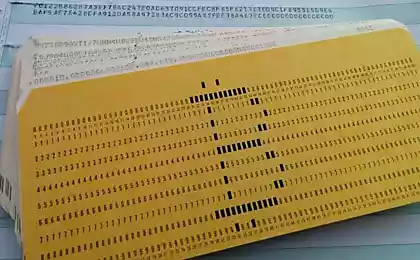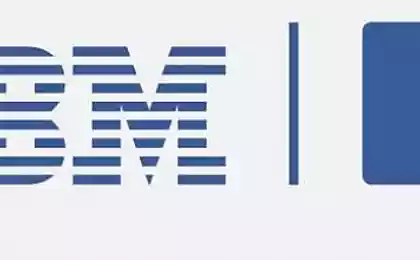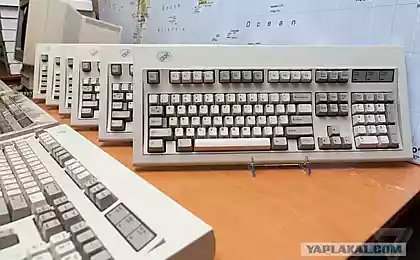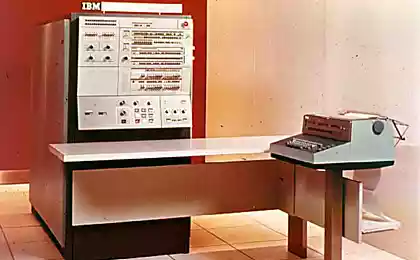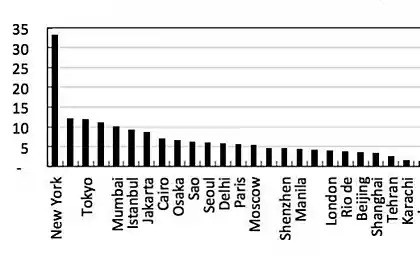1125
IBM will invest three billion in new generation computer architecture
The new processors will be created world is not based on silicon
IBM is in the next five years plans to allocate $ 3 billion. On the search for new materials for the manufacture of processors. In IBM intends to rethink the computer architecture and to evaluate the prospects, which may be silicon chips place no longer remain.
The new initiative should pave the way for quantum computers and cognitive simulating the functionality of the brain.
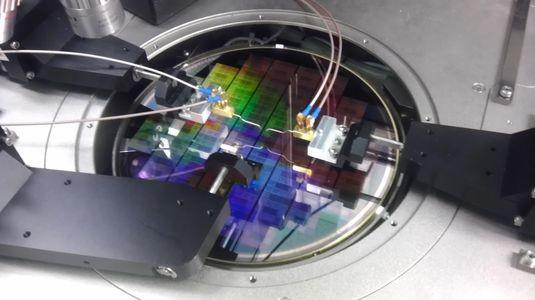
Opportunities silicon architecture exhausted, and further miniaturization of the element base is close to its limit
"The basic architecture of computers has remained unchanged since the 40s of XX century, - said the head of physical research at IBM Research Supratik Guha. - Taking into account the entire load of the problems faced by manufacturers today, we feel that it is time to seek new forms of computerization ».
Opportunities silicon architecture exhausted, and further miniaturization of the element base is close to its limit. Today at IBM are studying the possibility of graphene, carbon nanotubes and other materials that could replace silicon, and try to create the chip, the size of which can be reduced to the atomic level.
IBM announcement sounded a month after rethinking of the basic architecture of computers today announced the company Hewlett-Packard.
"IBM's goal is to prepare the building blocks for systems that can perform intelligent processing of large volumes of data, while consuming significantly less power - said senior vice president, IBM Systems and Technology Volume Rozamilia. - These computers could help in the study of cancer, weather modeling and the creation of more intelligent cloud services. A variety of accelerators, which include, for example, graphics processors, increase the performance of computers in the short term, but a further increase in density of elements in silicon processors needed for future growth performance and reduce energy consumption, is a much more difficult task. At certain historical moments industry must make the leap from one technology to another. And if we do not invent new solutions right now, none of us will not do it ».
IBM is already actively engaged in quantum computers and computers, working on the principle of the brain. The corresponding theoretical principles developed over decades, but put them into practice proved to be very difficult. Computers new type must be based on a completely different architecture compared to the machines used today. Accordingly, the question arises as to which of the proposed architecture should be preferred.
IBM compares and combines different technologies, preparing the building blocks for new computer systems.
"Some combinations will be able to prove its effectiveness and will be used for many years - have Rozamilia. - Plan all you need for many years to come. And we are very serious about this ».
The first results of the research, obviously, can be observed in the field of high performance computing, but eventually they will be reflected in the laptop and desktop computers. However, some specific timeframe Rozamilia difficult to call.
Investments grow as Moore's Law is nearing its end. Many years ago, one of the founders of Intel, Gordon Moore stated that the number of transistors in integrated circuits would double every two years. Until now, they formulated the law does not lose its relevance, but it is expected that in the next decade will stop its operation. Engineers are reviewing processor architecture, striving to achieve a further increase in productivity growth. And the chips become smaller, the more important this problem. Intel is already preparing to organize the production of a 14 nm design rule, and in the years to design standards should be reduced to 10 nm.
Processor revolution occurred in 1950, when scientists began to use purified silicon, but to expand the functionality in the transition to 7-nanometer manufacturing process becomes more difficult, because the industry is approaching the atomic level.
"What we will replace the existing technology in this range, it is unclear" - confessed Guha. - Carbon nanotubes, which are cylinders of carbon atoms, are now considered the most likely to replace silicon. IBM researchers gradually reduce the size of carbon nanotubes, but more acutely raises questions cooling. Recently, disputes and security. However, all agree that solve technical problems it is possible & quot ;.
For the development of quantum computers and computers that operate on the principle of the brain, further research is required behavior of computers.
IBM designs computers that simulate the functionality of the brain, the program SyNAPSE. The brain processes information, which is supplied in parallel to it through the trillions of compounds called synapses. In 2011, IBM demonstrated neural chip with programmable synapses and trains that enables navigation and pattern recognition. Today, IBM's goal is to construct a neural chip simulating the operation of the human brain. If there are 10 billion neurons and 100 trillion synapses, it will consume only one kilowatt of electricity.
The heart of a quantum computer are quantum bits (qubits), which store the values of zeros, ones and their superposition. This is different from conventional computers, memory cells which at any given time is either 0 or 1. By increasing the number of supported states of qubits can increase the speed of computation.
Of course, researchers still have to overcome a lot of difficulties, including the quantum noise in which the qubits are moving in undesirable conditions, which complicates the normal program execution. The only known quantum computer sold today by D-Wave Systems, but at the beginning of this year, IBM researchers managed to translate computer ratio in the plane of quantum mechanics, which describes the behavior and interaction at the atomic and subatomic level.
www.osp.ru/news/articles/2014/30/13042197/
IBM is in the next five years plans to allocate $ 3 billion. On the search for new materials for the manufacture of processors. In IBM intends to rethink the computer architecture and to evaluate the prospects, which may be silicon chips place no longer remain.
The new initiative should pave the way for quantum computers and cognitive simulating the functionality of the brain.

Opportunities silicon architecture exhausted, and further miniaturization of the element base is close to its limit
"The basic architecture of computers has remained unchanged since the 40s of XX century, - said the head of physical research at IBM Research Supratik Guha. - Taking into account the entire load of the problems faced by manufacturers today, we feel that it is time to seek new forms of computerization ».
Opportunities silicon architecture exhausted, and further miniaturization of the element base is close to its limit. Today at IBM are studying the possibility of graphene, carbon nanotubes and other materials that could replace silicon, and try to create the chip, the size of which can be reduced to the atomic level.
IBM announcement sounded a month after rethinking of the basic architecture of computers today announced the company Hewlett-Packard.
"IBM's goal is to prepare the building blocks for systems that can perform intelligent processing of large volumes of data, while consuming significantly less power - said senior vice president, IBM Systems and Technology Volume Rozamilia. - These computers could help in the study of cancer, weather modeling and the creation of more intelligent cloud services. A variety of accelerators, which include, for example, graphics processors, increase the performance of computers in the short term, but a further increase in density of elements in silicon processors needed for future growth performance and reduce energy consumption, is a much more difficult task. At certain historical moments industry must make the leap from one technology to another. And if we do not invent new solutions right now, none of us will not do it ».
IBM is already actively engaged in quantum computers and computers, working on the principle of the brain. The corresponding theoretical principles developed over decades, but put them into practice proved to be very difficult. Computers new type must be based on a completely different architecture compared to the machines used today. Accordingly, the question arises as to which of the proposed architecture should be preferred.
IBM compares and combines different technologies, preparing the building blocks for new computer systems.
"Some combinations will be able to prove its effectiveness and will be used for many years - have Rozamilia. - Plan all you need for many years to come. And we are very serious about this ».
The first results of the research, obviously, can be observed in the field of high performance computing, but eventually they will be reflected in the laptop and desktop computers. However, some specific timeframe Rozamilia difficult to call.
Investments grow as Moore's Law is nearing its end. Many years ago, one of the founders of Intel, Gordon Moore stated that the number of transistors in integrated circuits would double every two years. Until now, they formulated the law does not lose its relevance, but it is expected that in the next decade will stop its operation. Engineers are reviewing processor architecture, striving to achieve a further increase in productivity growth. And the chips become smaller, the more important this problem. Intel is already preparing to organize the production of a 14 nm design rule, and in the years to design standards should be reduced to 10 nm.
Processor revolution occurred in 1950, when scientists began to use purified silicon, but to expand the functionality in the transition to 7-nanometer manufacturing process becomes more difficult, because the industry is approaching the atomic level.
"What we will replace the existing technology in this range, it is unclear" - confessed Guha. - Carbon nanotubes, which are cylinders of carbon atoms, are now considered the most likely to replace silicon. IBM researchers gradually reduce the size of carbon nanotubes, but more acutely raises questions cooling. Recently, disputes and security. However, all agree that solve technical problems it is possible & quot ;.
For the development of quantum computers and computers that operate on the principle of the brain, further research is required behavior of computers.
IBM designs computers that simulate the functionality of the brain, the program SyNAPSE. The brain processes information, which is supplied in parallel to it through the trillions of compounds called synapses. In 2011, IBM demonstrated neural chip with programmable synapses and trains that enables navigation and pattern recognition. Today, IBM's goal is to construct a neural chip simulating the operation of the human brain. If there are 10 billion neurons and 100 trillion synapses, it will consume only one kilowatt of electricity.
The heart of a quantum computer are quantum bits (qubits), which store the values of zeros, ones and their superposition. This is different from conventional computers, memory cells which at any given time is either 0 or 1. By increasing the number of supported states of qubits can increase the speed of computation.
Of course, researchers still have to overcome a lot of difficulties, including the quantum noise in which the qubits are moving in undesirable conditions, which complicates the normal program execution. The only known quantum computer sold today by D-Wave Systems, but at the beginning of this year, IBM researchers managed to translate computer ratio in the plane of quantum mechanics, which describes the behavior and interaction at the atomic and subatomic level.
www.osp.ru/news/articles/2014/30/13042197/

